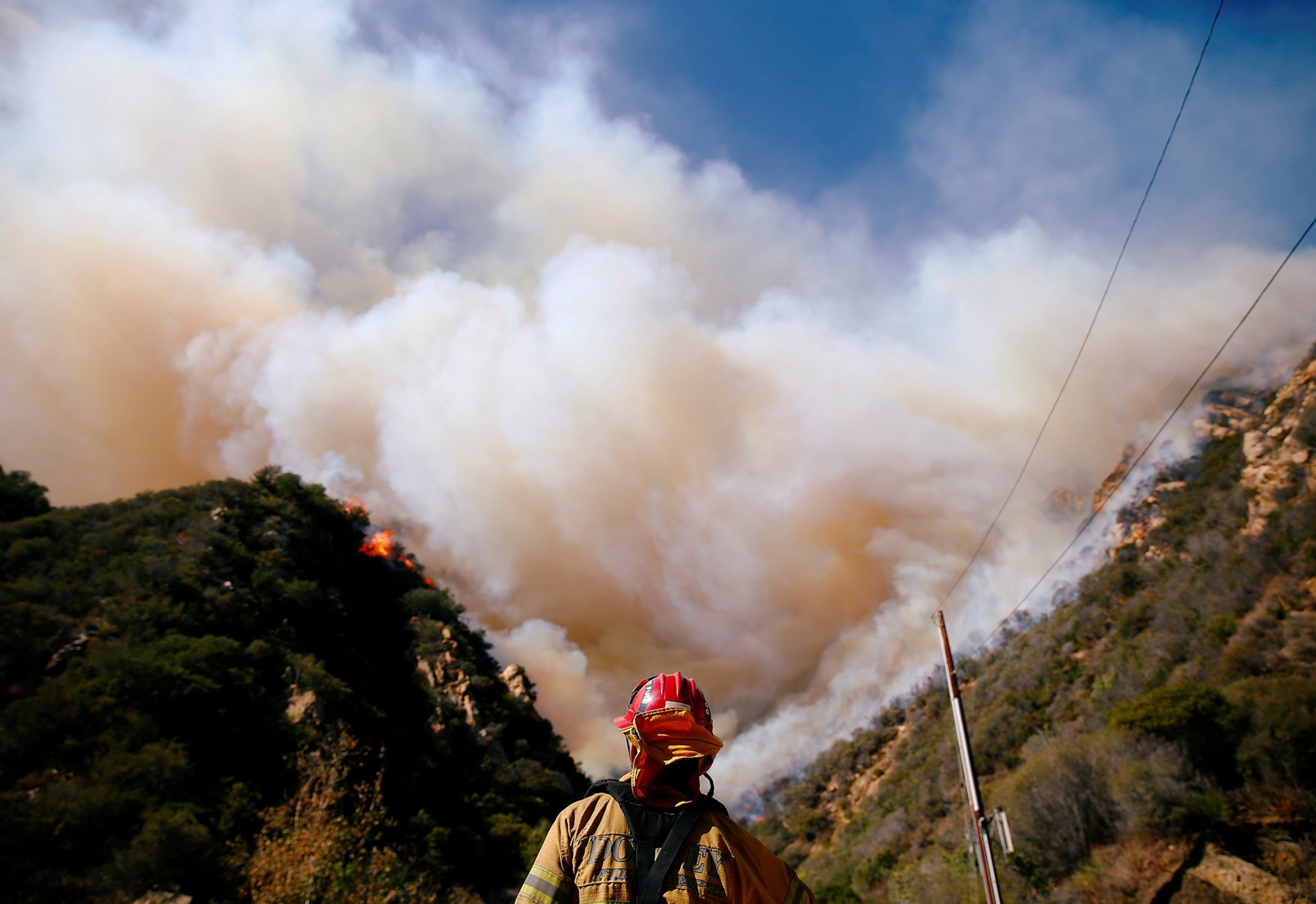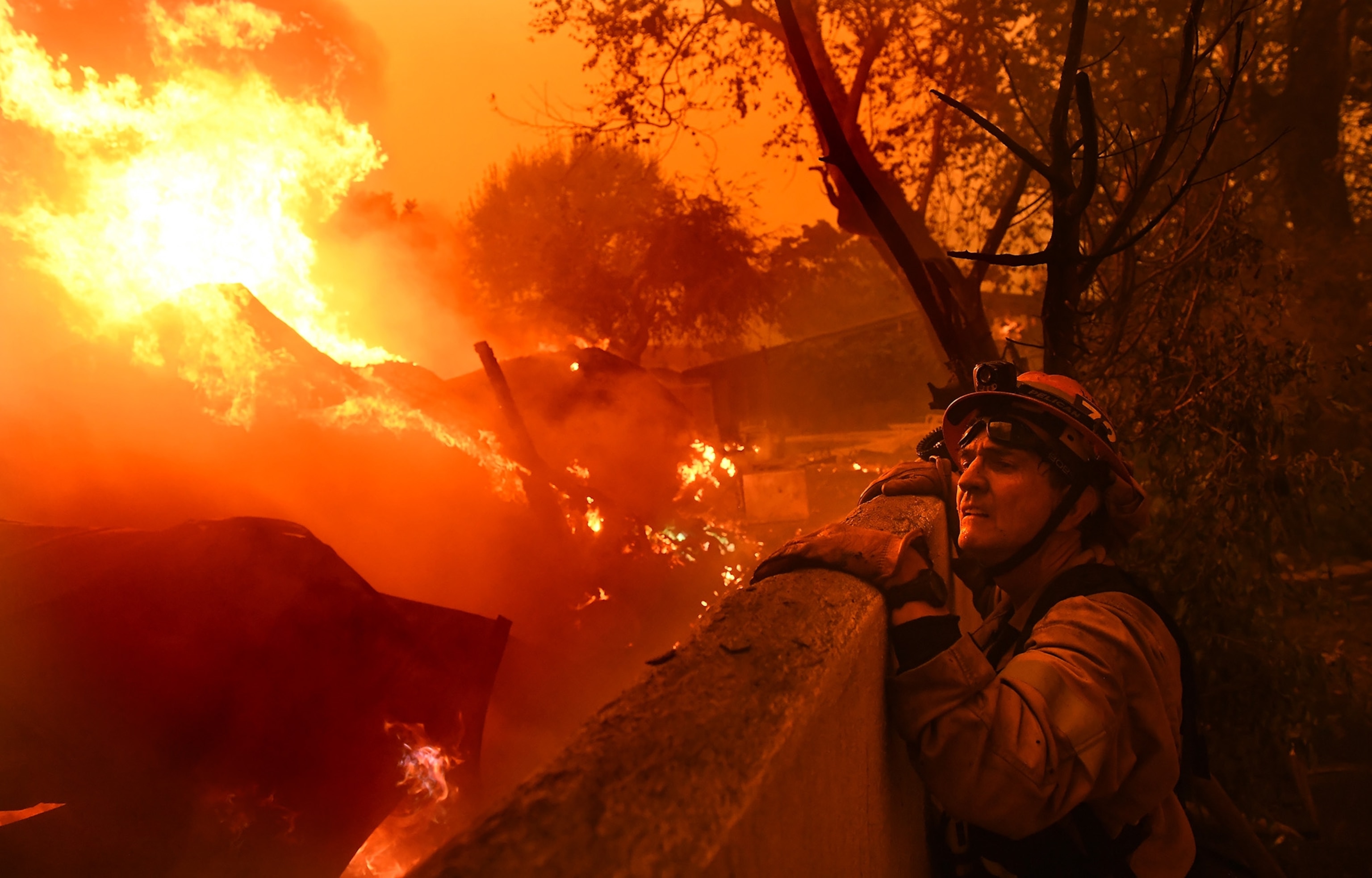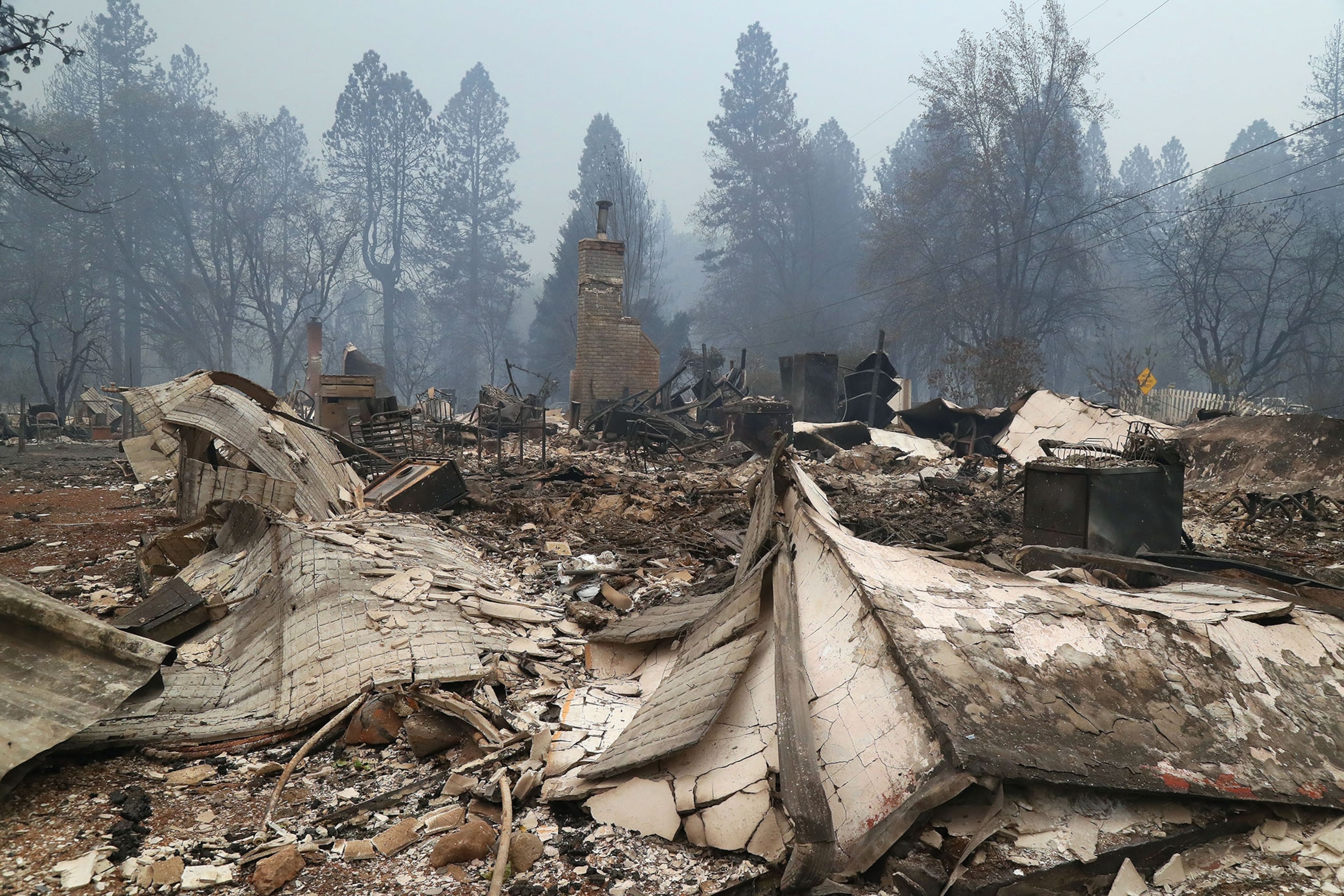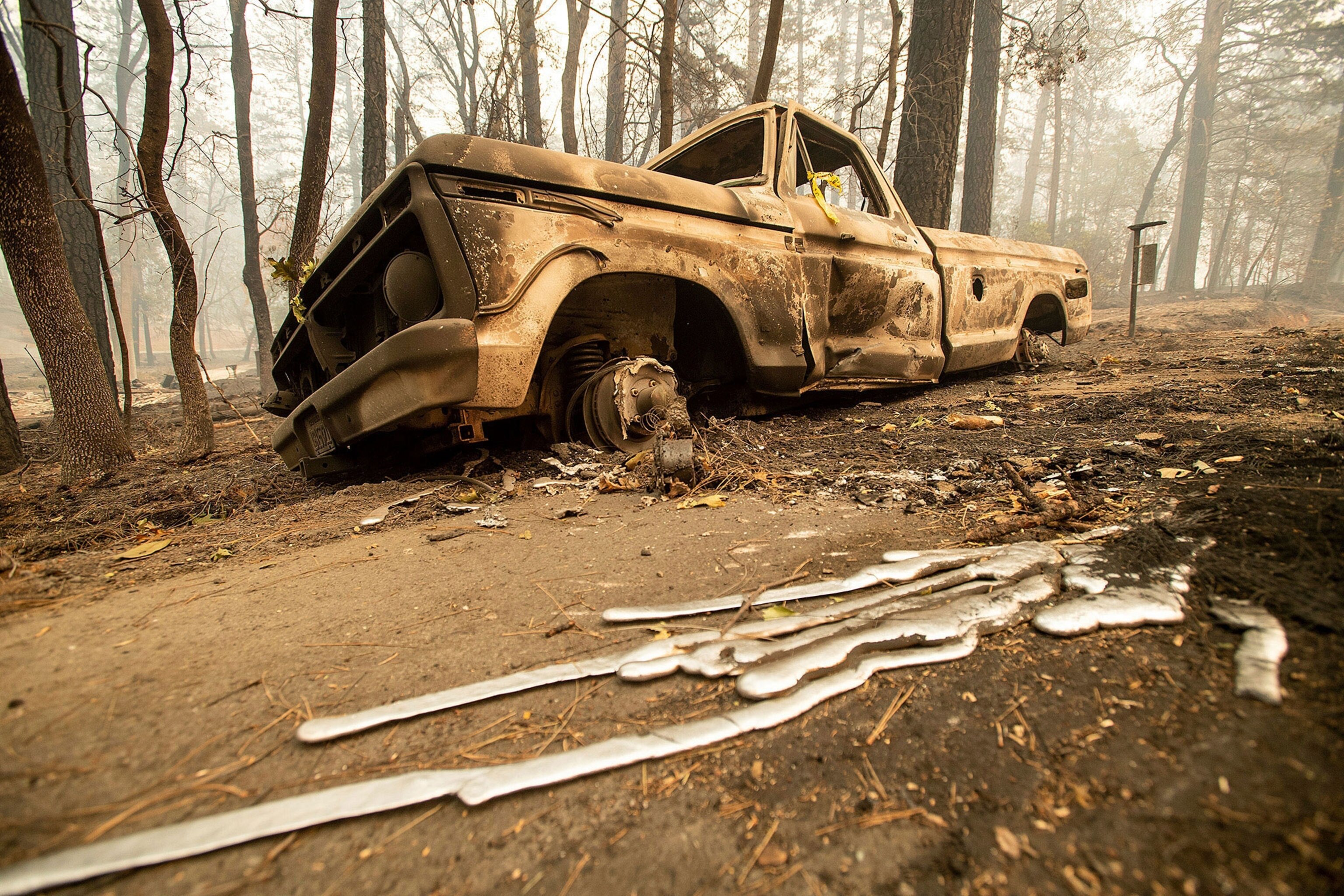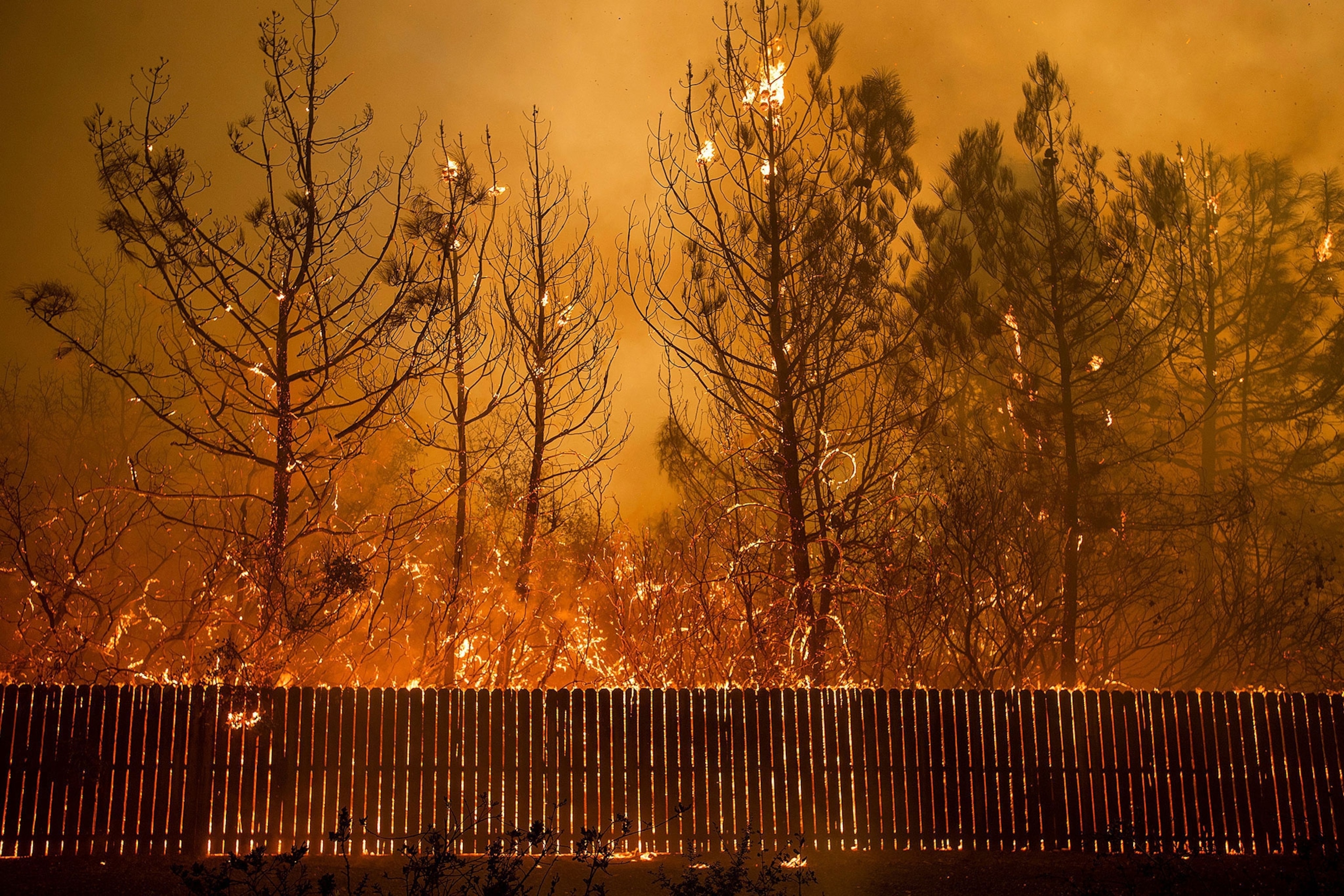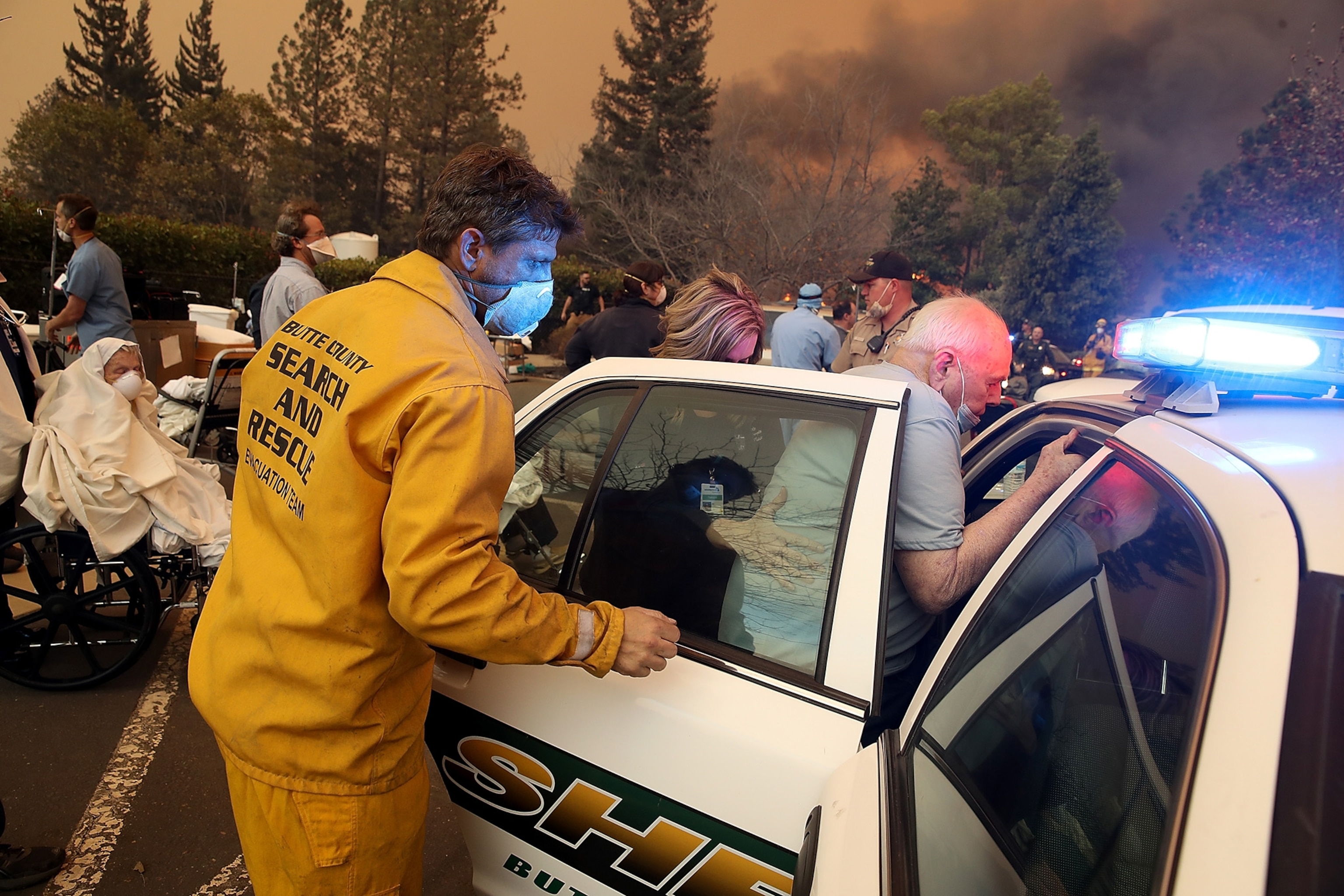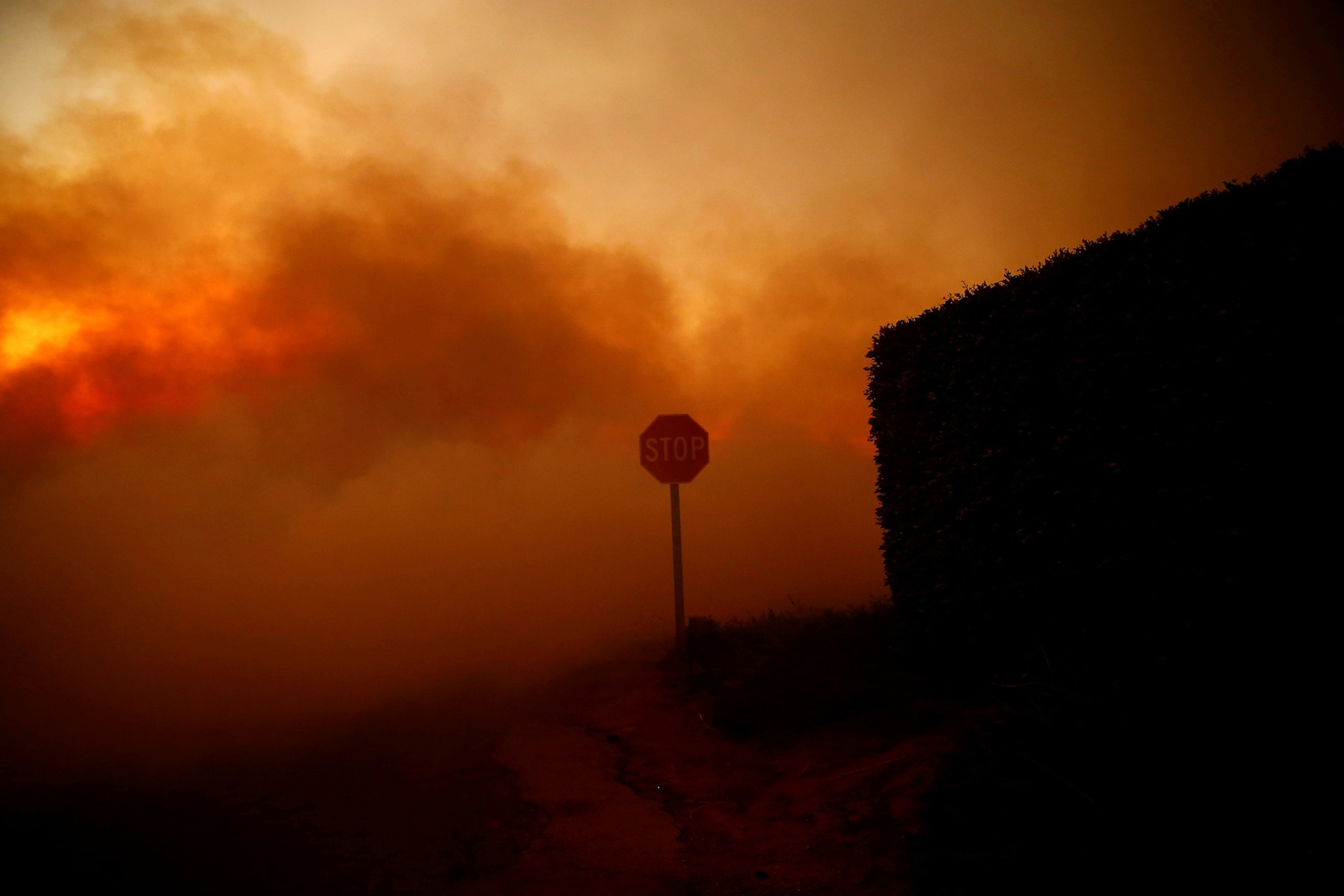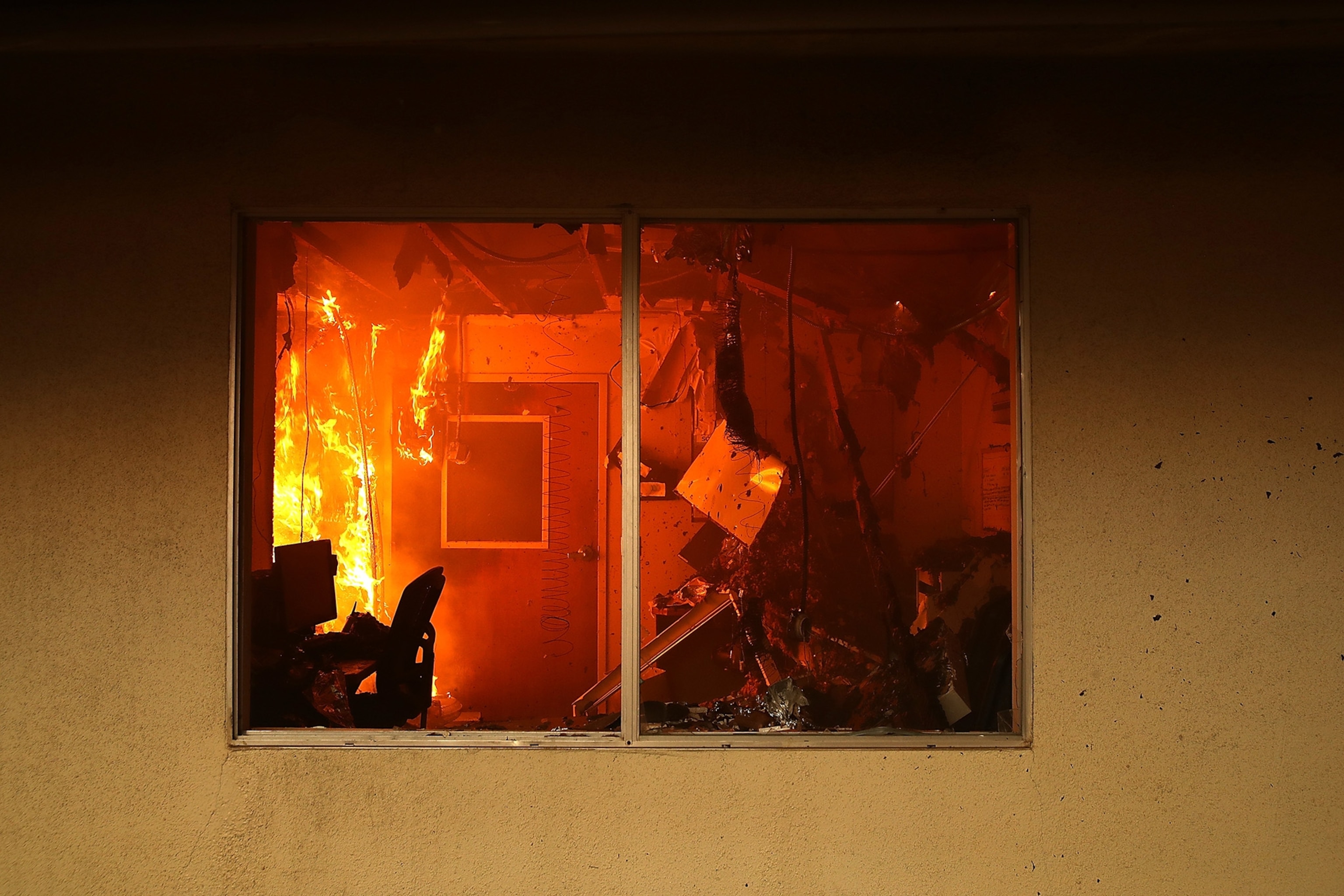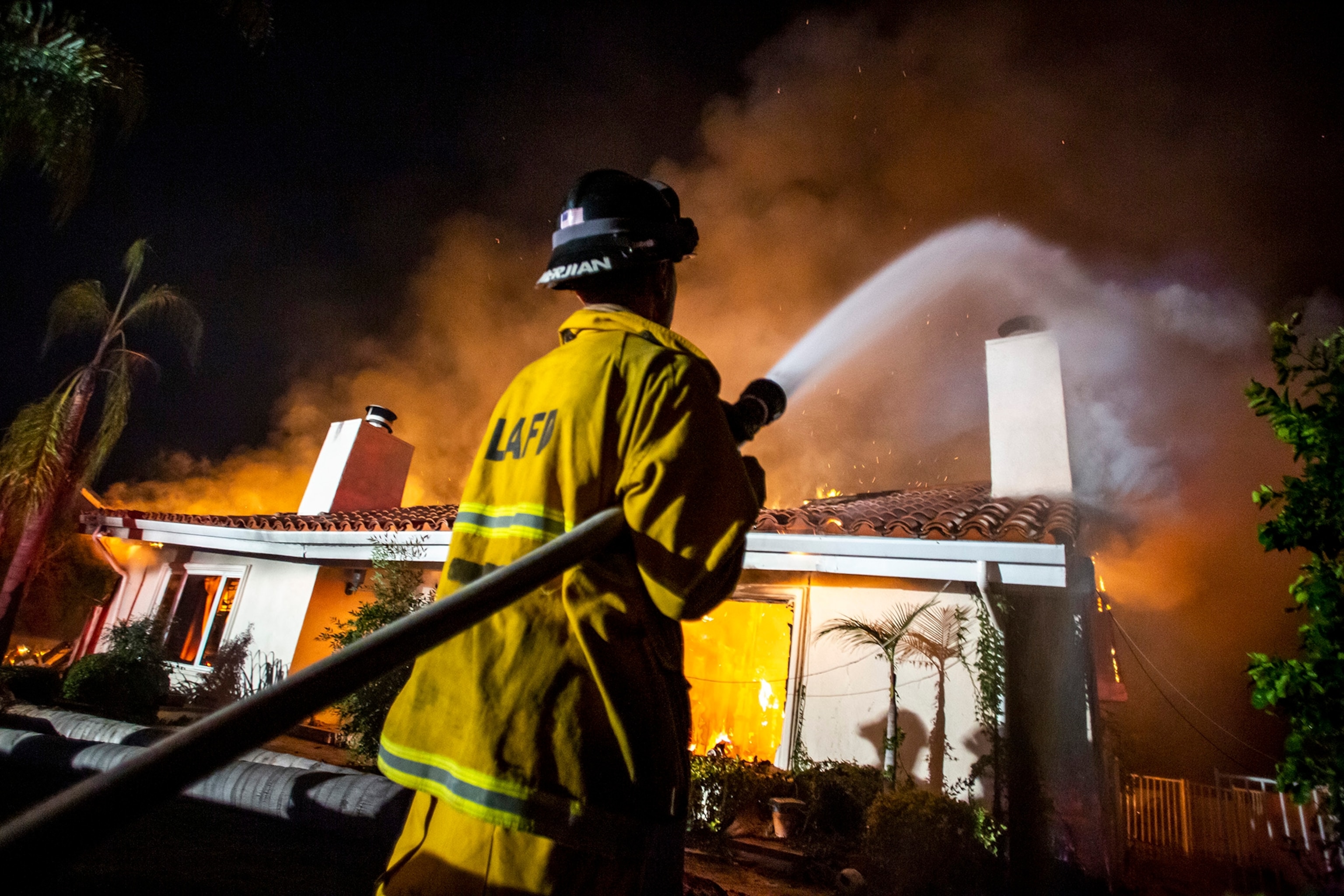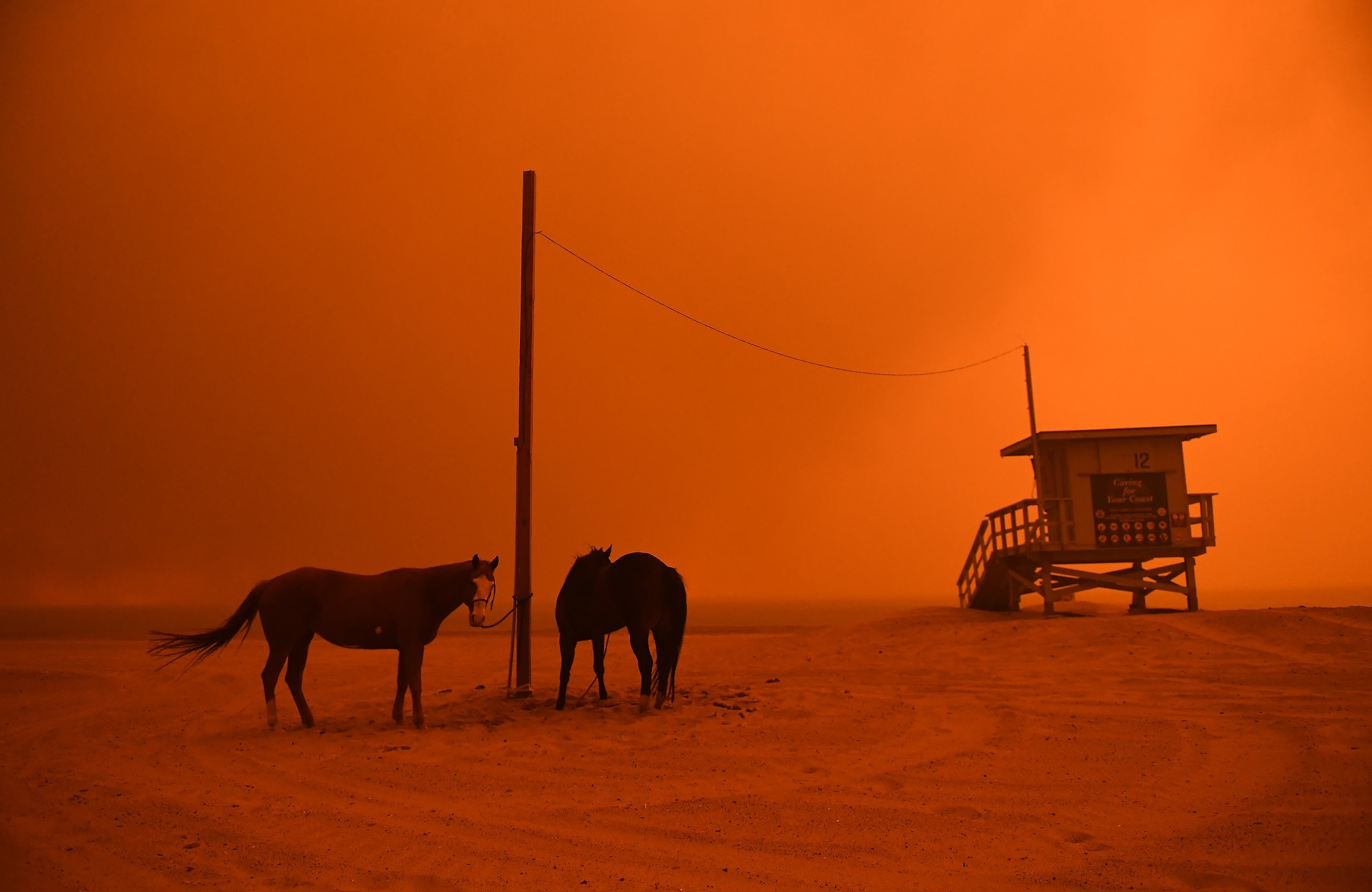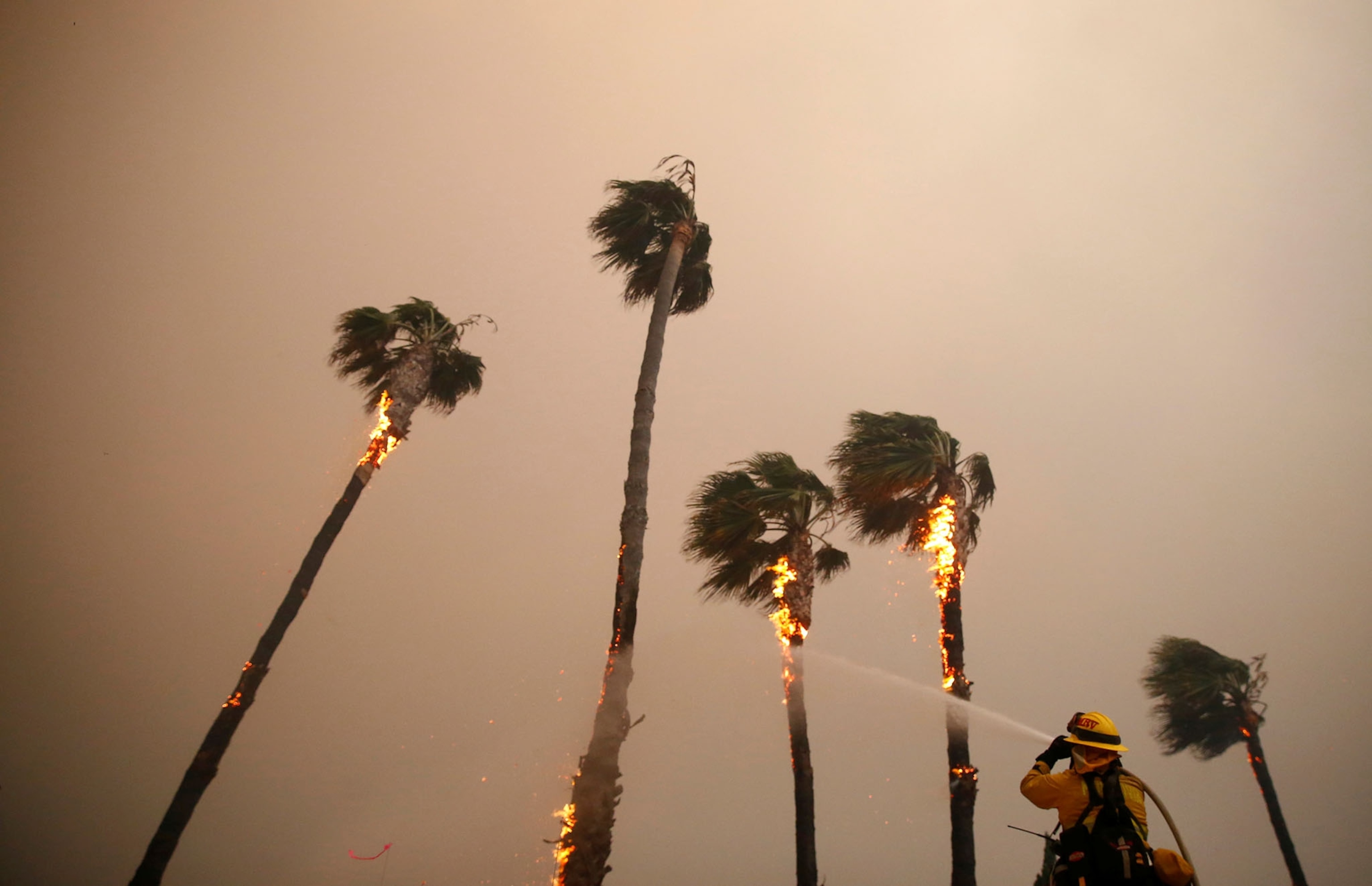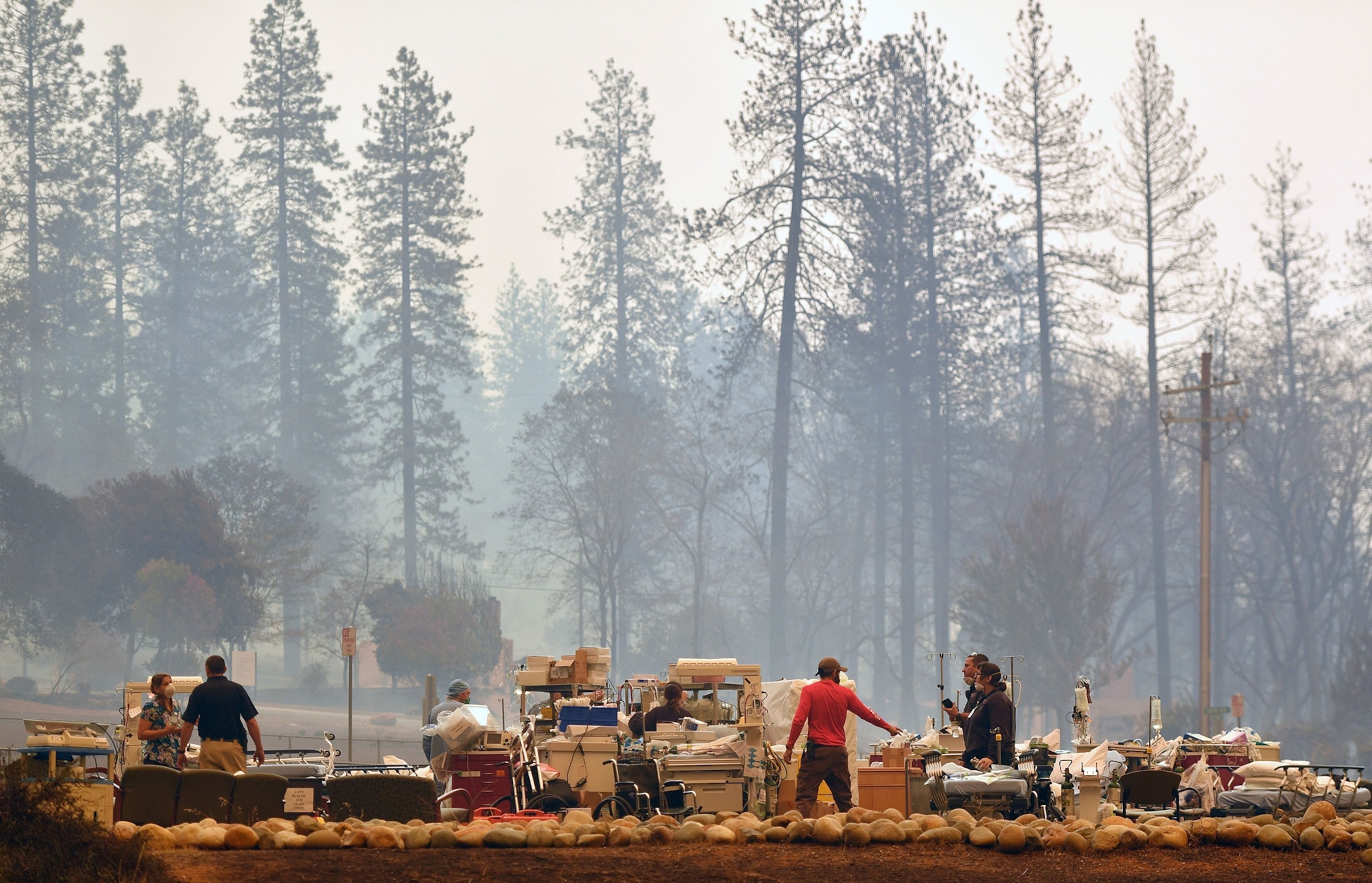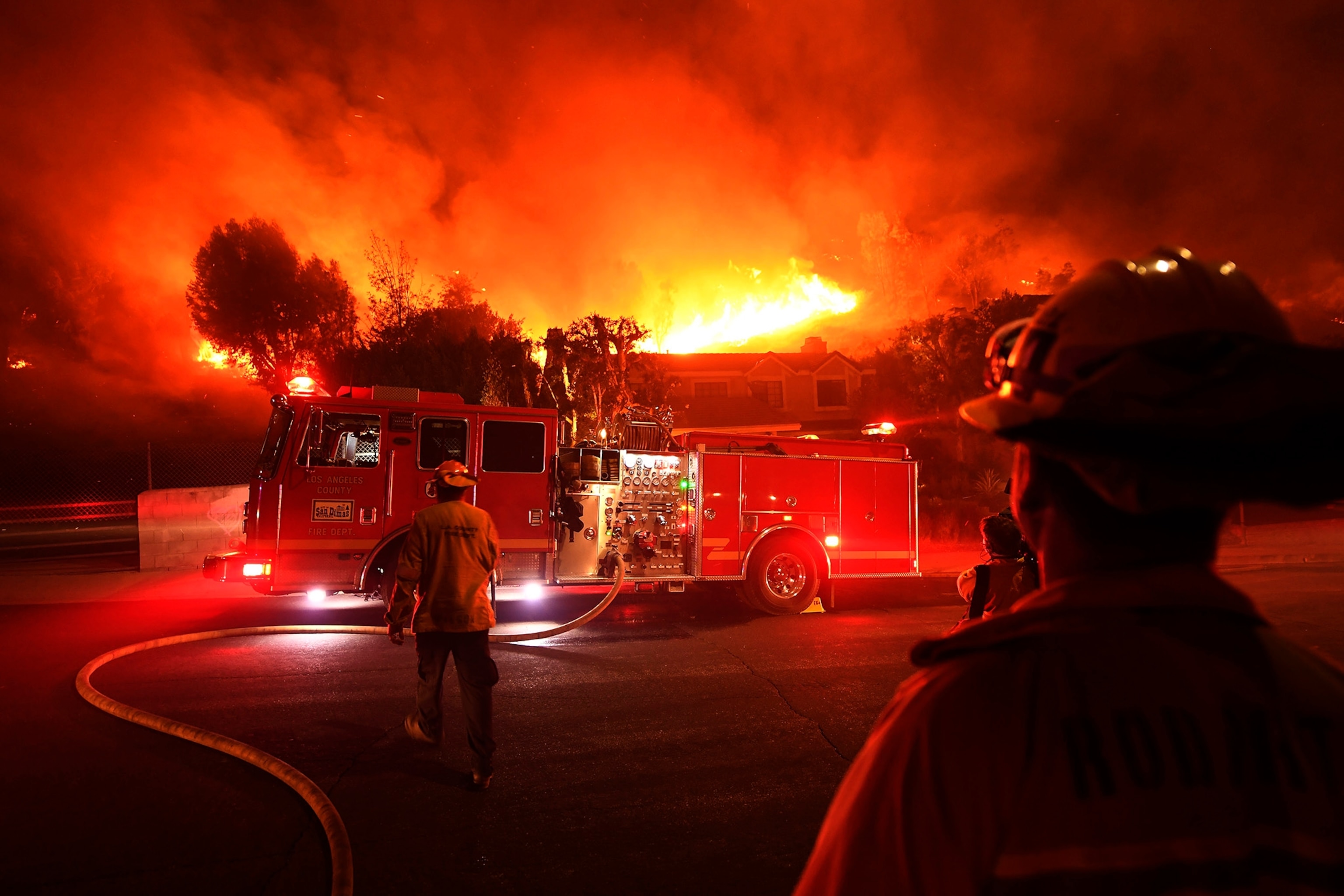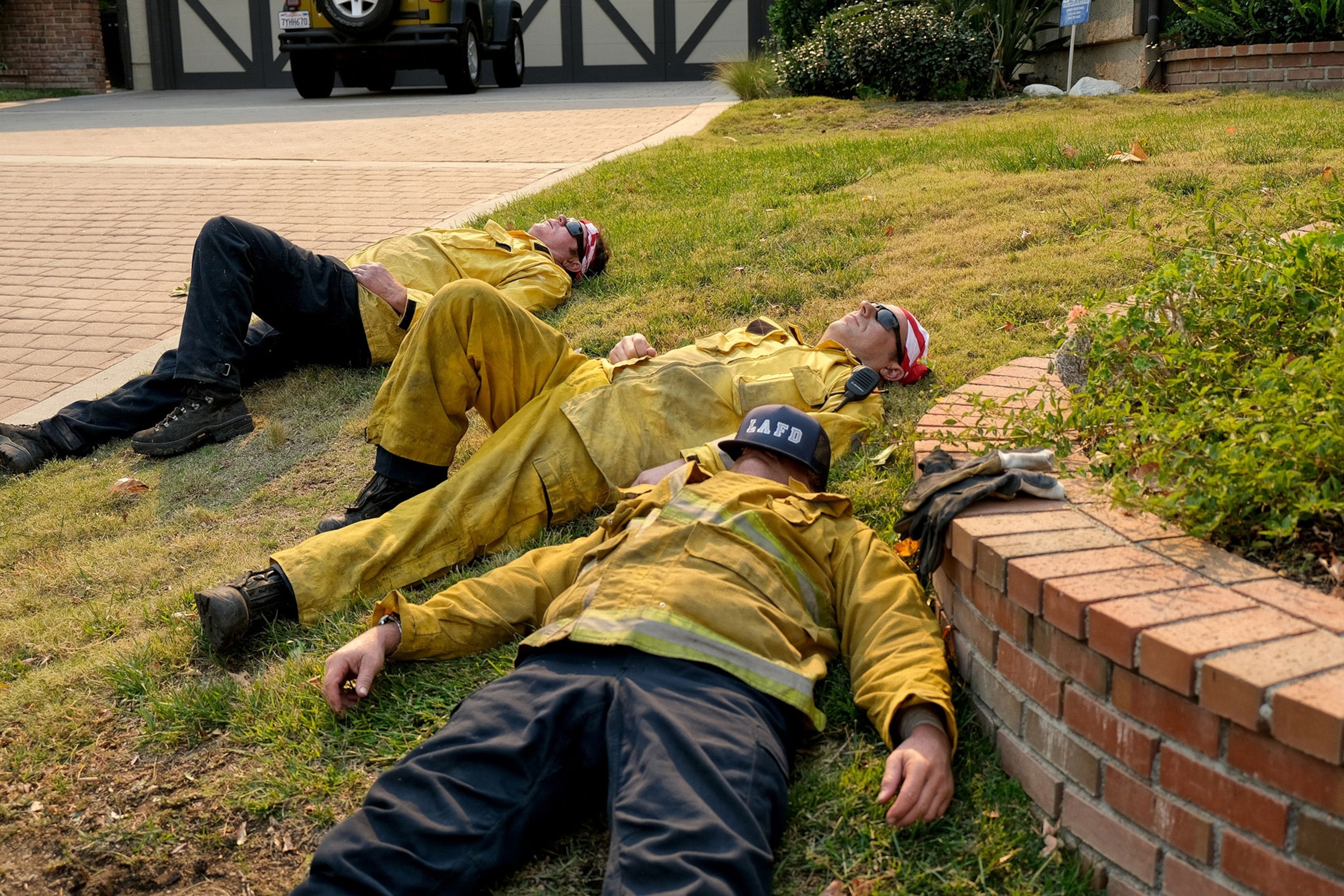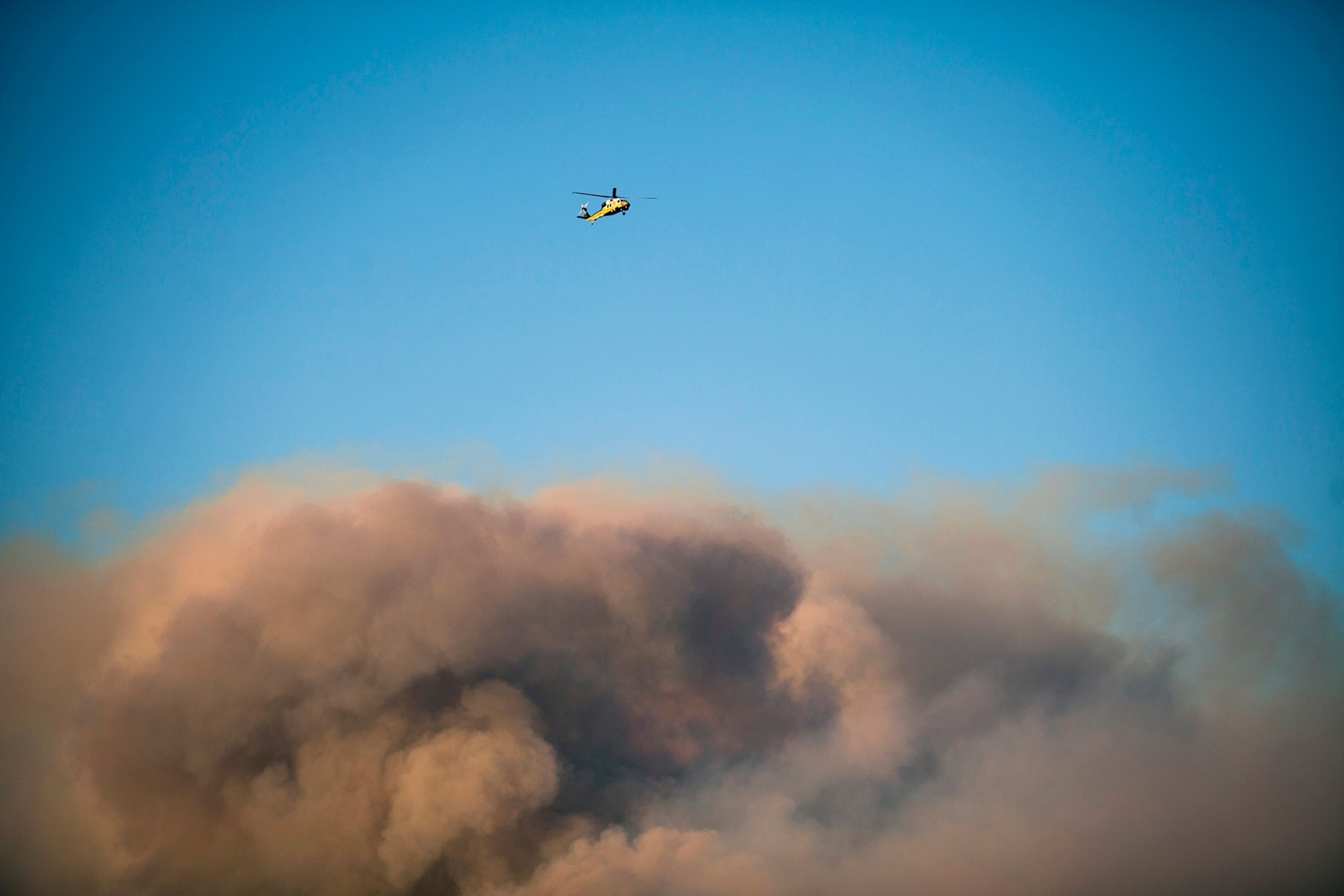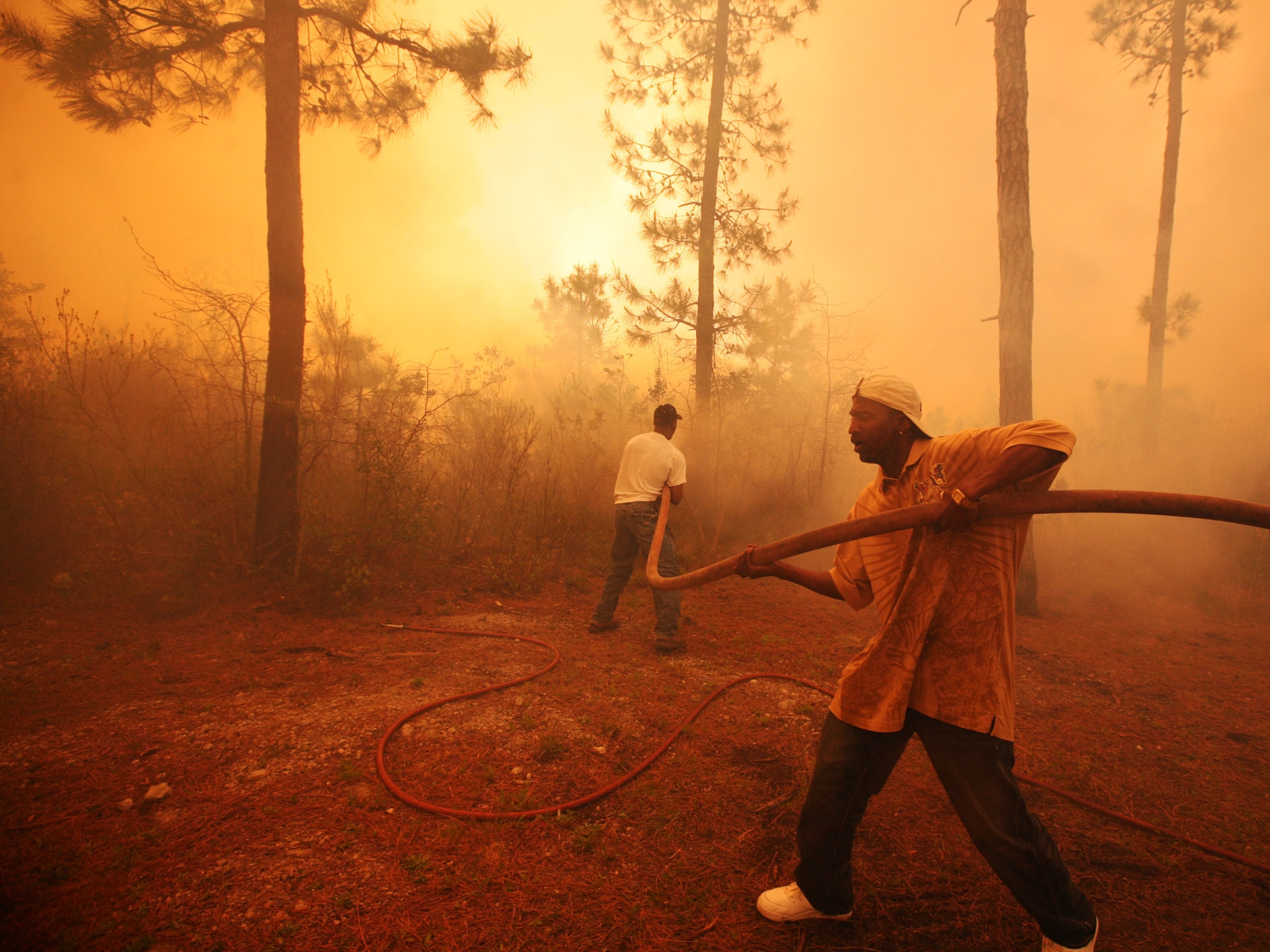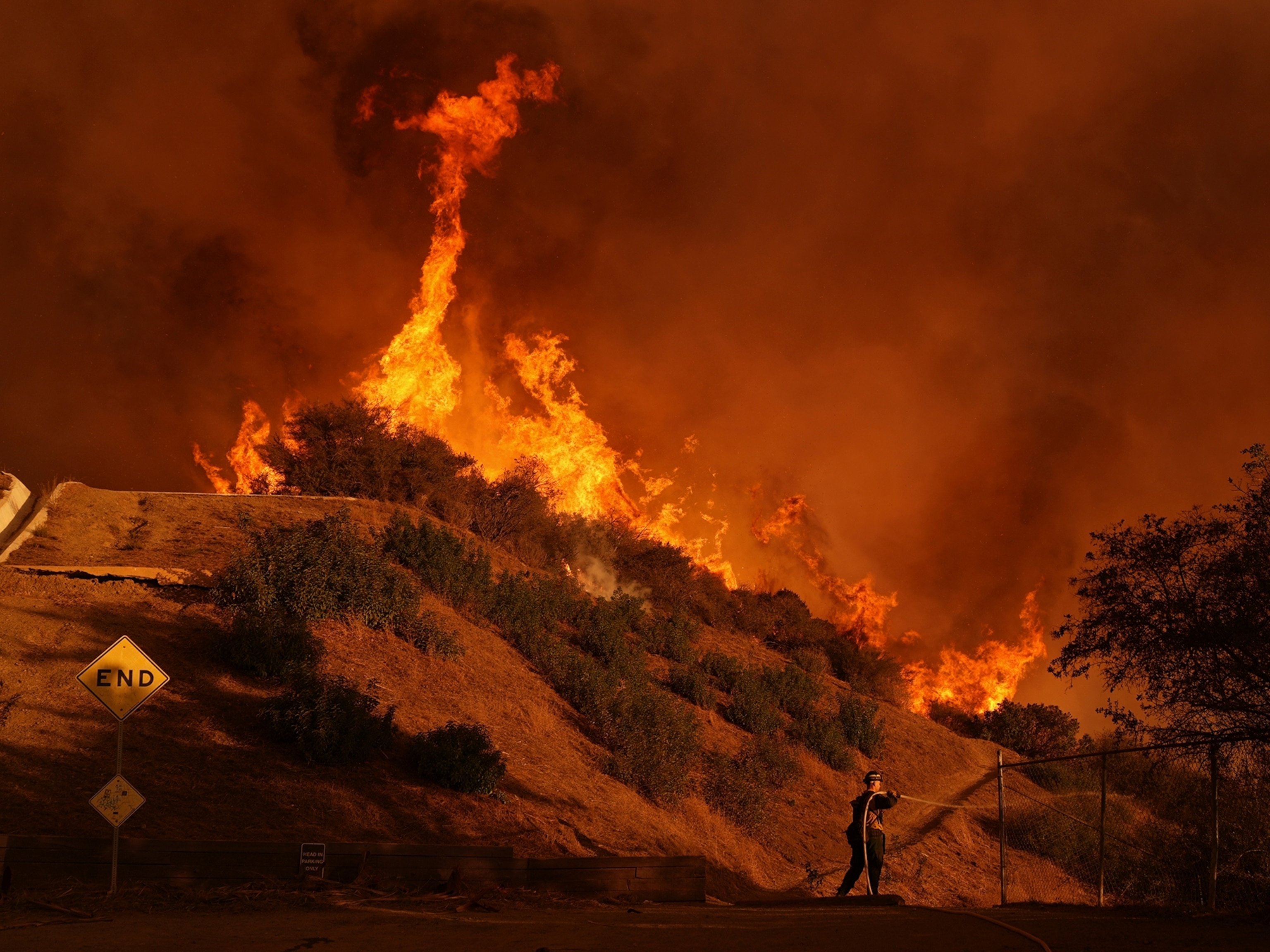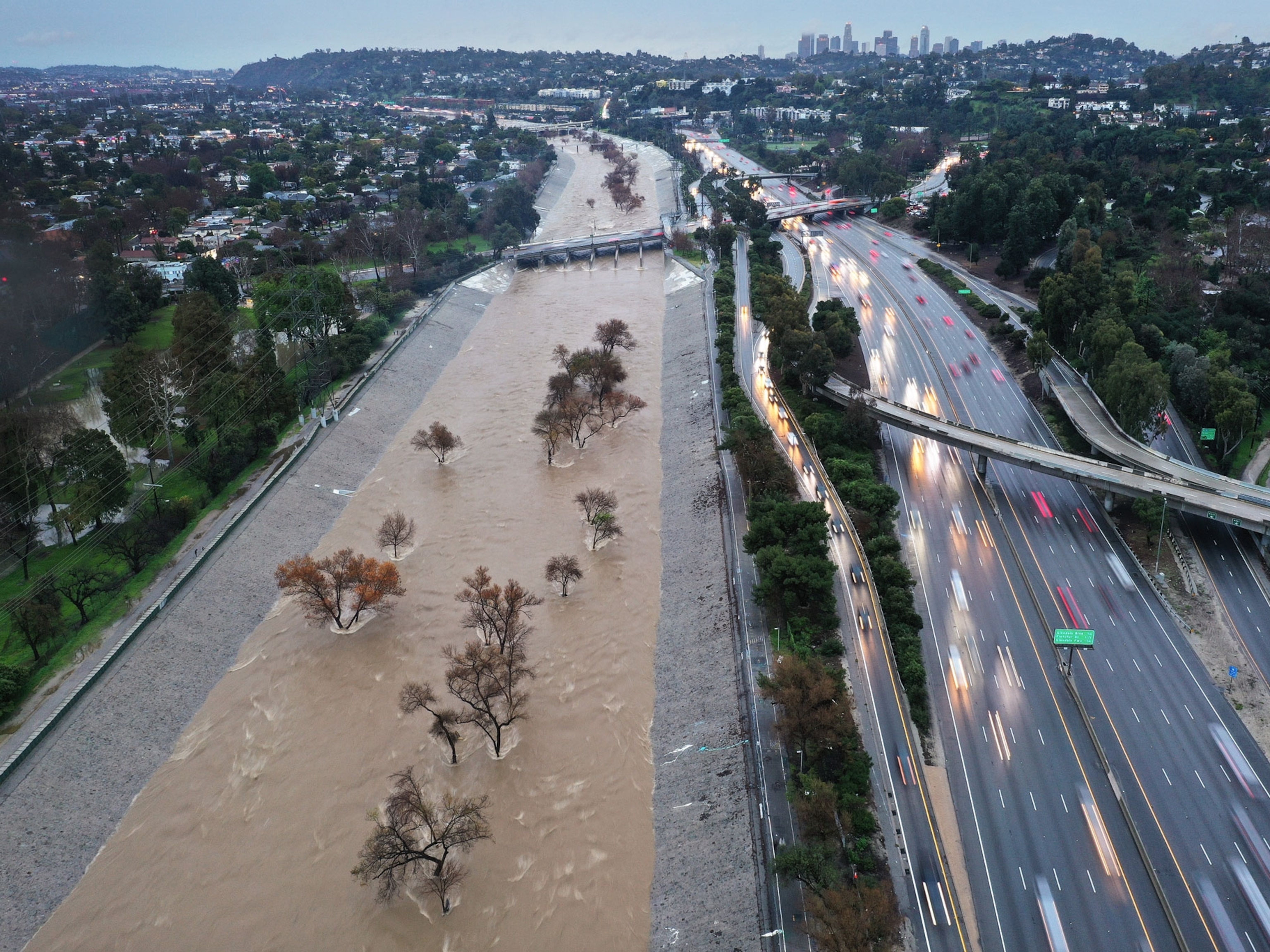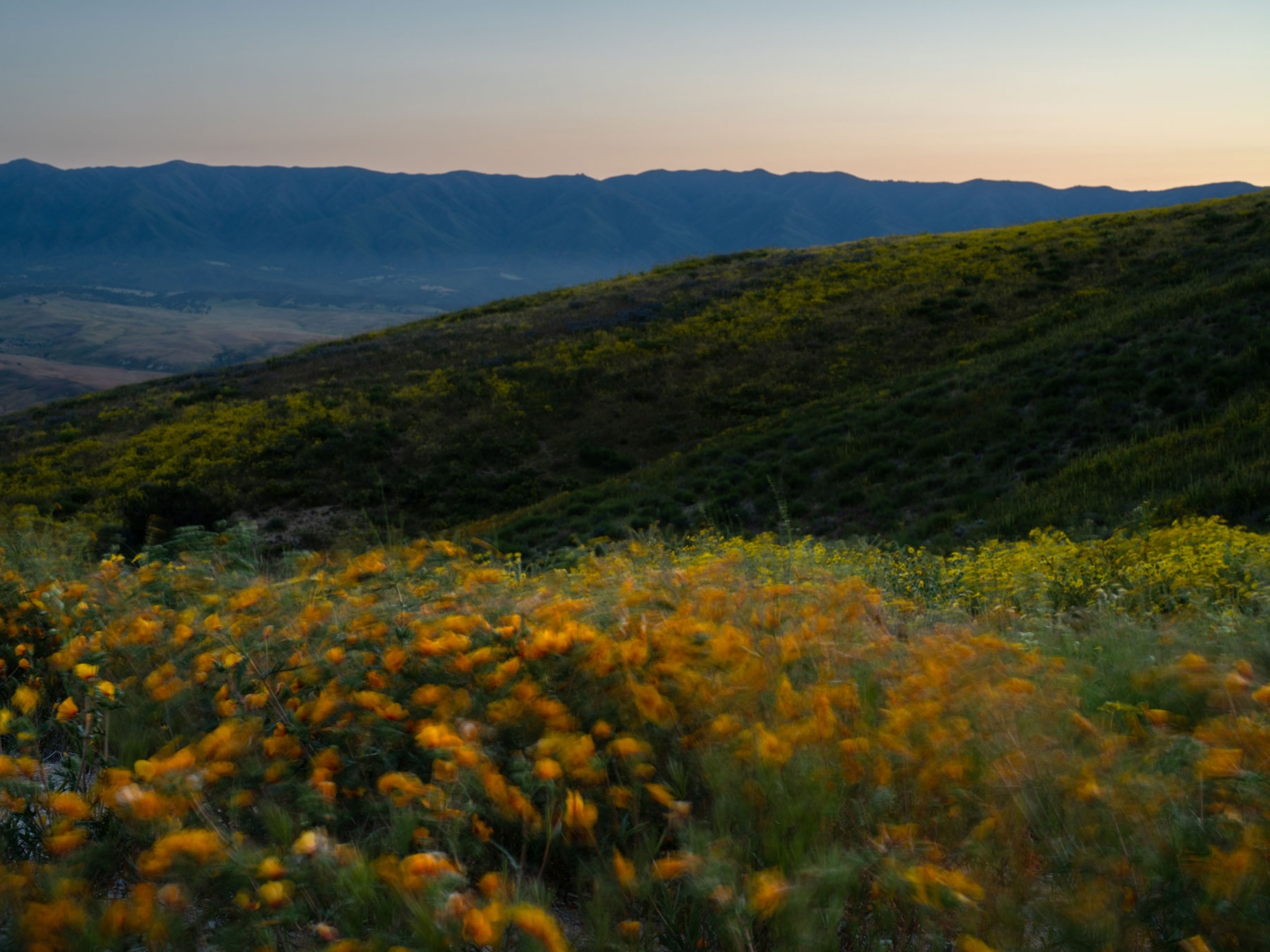Why California's wildfires are so hard to fight
Intense winds, drought, and difficult terrain is making the fire difficult to contain.
Wildfires can spring up anywhere that dry brush is exposed to a spark, but in California the challenge of fighting them is especially acute.
“What we're seeing now is that the fire season for the last two years has been a year-round fire season,” says Brian Rice, chairman of the California Fire Foundation and president of the California Professional Firefighters.
Hot, dry summer conditions are persisting into the fall, Rice says, leaving the state flammable. According to the U.S. drought monitor, 18 percent of the state is currently experiencing severe drought, which is exacerbating the existing seasonal weather patterns and landscapes that make it difficult to fight fires in California.
Heavy winds
It only takes a little wind to make a fire grow. In California, last week's 50-to-70-mph winds led to fires that exploded in size in only a few hours. The Camp Fire forced the evacuation of Paradise, in northern California, before firefighting had even begun. On Friday, the Woolsey Fire north of Los Angeles spread from 8,000 acres to 35,000 acres in less than a day.
The region's topography is in part to blame for the intense winds. When high pressure builds in the deserts to the east of California's mountains, it runs through the mountains like a funnel, rushing to fill the areas of low pressure hovering over the Pacific coast.
Alerts from the National Weather Service warn that northern California will experience intense, dry wind Monday and Tuesday while southern California may see gusts as strong as hurricane-force winds.
These winds can make the fires uncontrollable and unpredictable for firefighters. Already, 50 people have been reported dead and hundreds of thousands have been evacuated from their homes.
Rough terrain
California's famous hillsides and canyons both help fires grow and make it difficult for firefighters to put them out. Canyons become like furnaces as wildfires blaze through, heating the rock walls.
“When terrain is rugged, it’s not safe to put ground crew directly on it,” says Rice.
When fires burn through rocky places and hard-to-reach hillsides, he says, the Forest Service will focus more aerial assets over the region. Planes bearing fire retardant fly over the large blazes, and firefighters called smokejumpers parachute down to the fire sites.
Whether they arrive to the sites by plane or by truck, firefighters must ultimately struggle forward on foot, armed with “elbow grease, a strong back, and water,” says Rice.
Carrying two and a half to five gallons of water each, they can target key sources of the fire's fuel, like dry brush. They also lay thousands of yards of soaker hose lines to contain fires.
There’s one silver lining to hilly terrain: Steep ridges can prevent fires from spreading. “Topography can be your worst enemy but it can also help you,” says Rice.
These natural conditions add to what many are saying is a fire season made worse by climate change.
“This is not the new normal. This is the new abnormal,” California's governor Jerry Brown said at a press conference on Monday. He cited climate change as a major reason why the state has seen an uptick in deadlier wildfires over the past few years.
